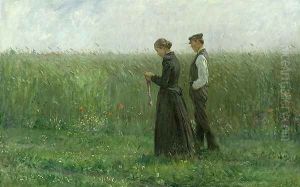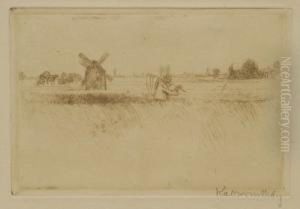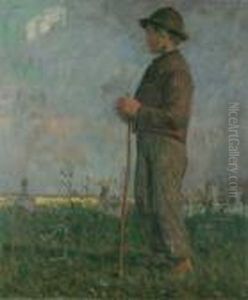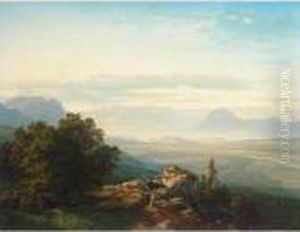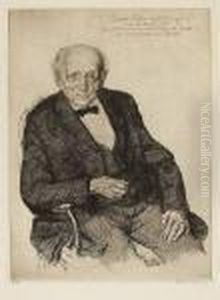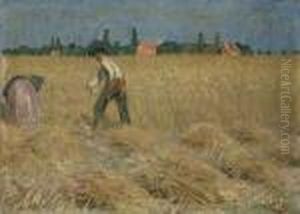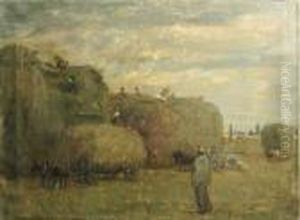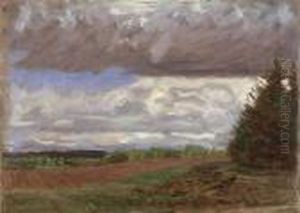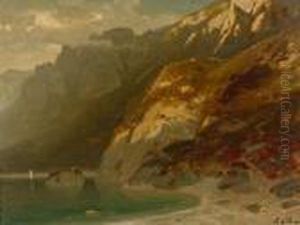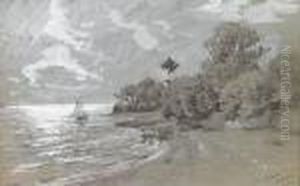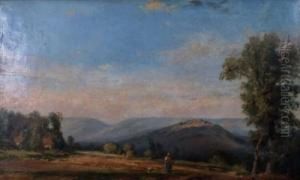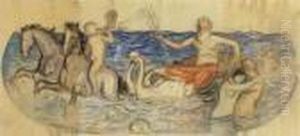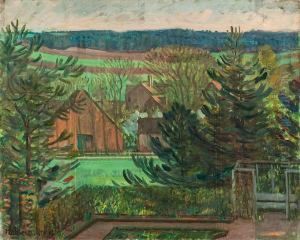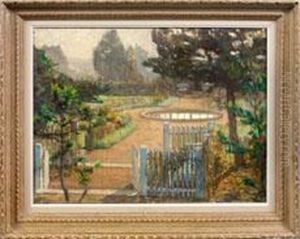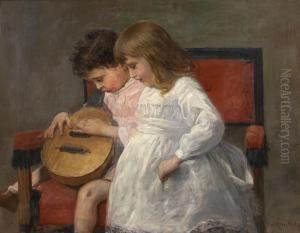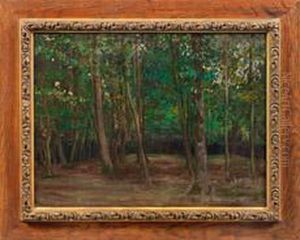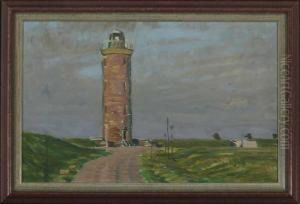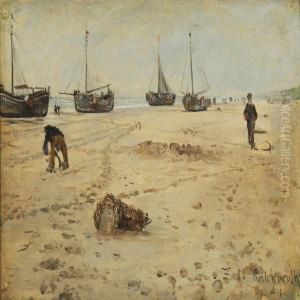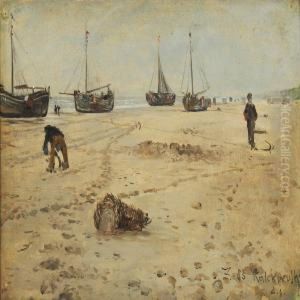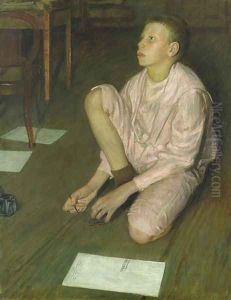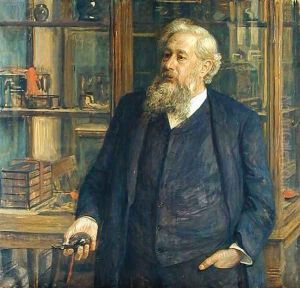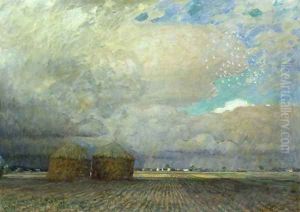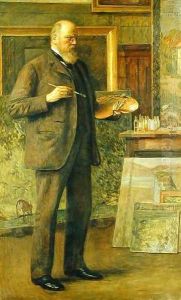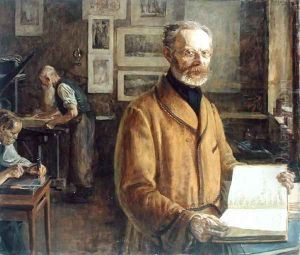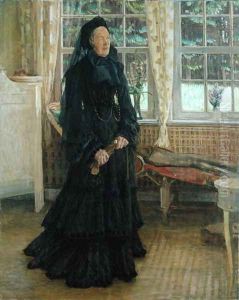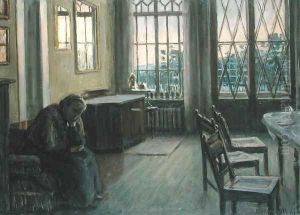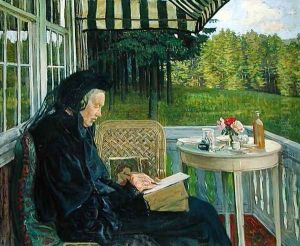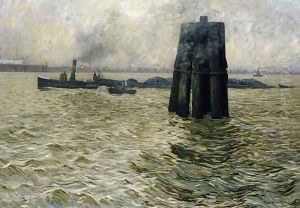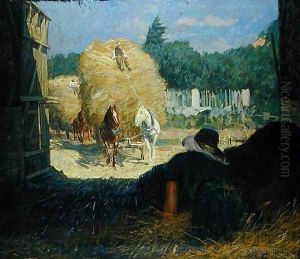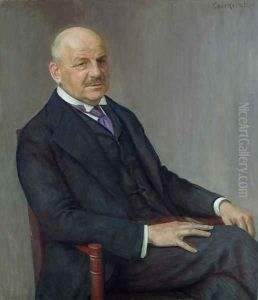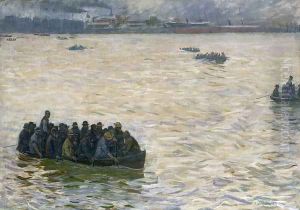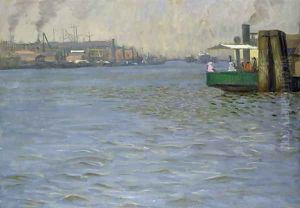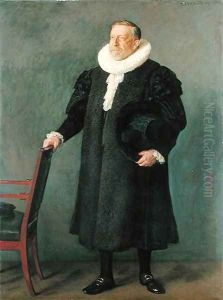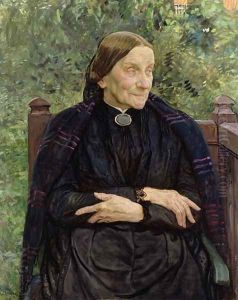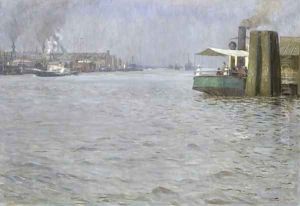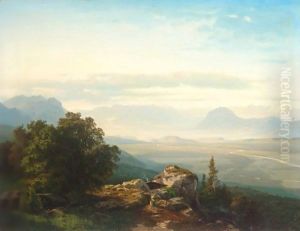Leopold Karl Walter von Kalckreuth Paintings
Leopold Karl Walter Graf von Kalckreuth was a German painter and graphic artist who played a significant role in the art scene of his time. Born on May 15, 1855, in Düsseldorf, Germany, he was part of a noble family with a long tradition. His father, Stanislaus von Kalckreuth, was also a painter, which likely influenced Leopold's early exposure to the arts.
Kalckreuth received his artistic training at the Weimar Saxon-Grand Ducal Art School under the tutelage of Stanislaus von Kalckreuth (his father) and later at the Academy of Fine Arts Munich. He was particularly known for his landscape paintings, which often captured the mood and atmosphere of the natural scenes he depicted. Kalckreuth's style was rooted in the Realist tradition, but he also showed elements of the emerging Impressionist movement in his work, especially in his treatment of light and color.
Throughout his career, Kalckreuth was a prominent member of various artistic associations. He was involved with the Munich Secession, an art movement that sought to break away from the traditional academic style of painting. He also served as the president of the German Association of Artists for a time and was a professor at the Academy of Fine Arts in Stuttgart.
Kalckreuth's work was widely recognized and appreciated during his lifetime. He received numerous awards and honors, including the Prussian Order of the Crown. His paintings were exhibited in major art shows across Europe, and he was well-regarded by both critics and the public.
Tragically, Kalckreuth's life came to a sudden end when he committed suicide on December 1, 1928, in Gut Pieskow, now part of Steinhöfel, Germany. Despite the tragic end to his life, his artistic legacy continues to be celebrated for its contribution to German landscape painting and for bridging the gap between Realism and Impressionism. His works can be found in various art galleries and museums in Germany and around the world.
